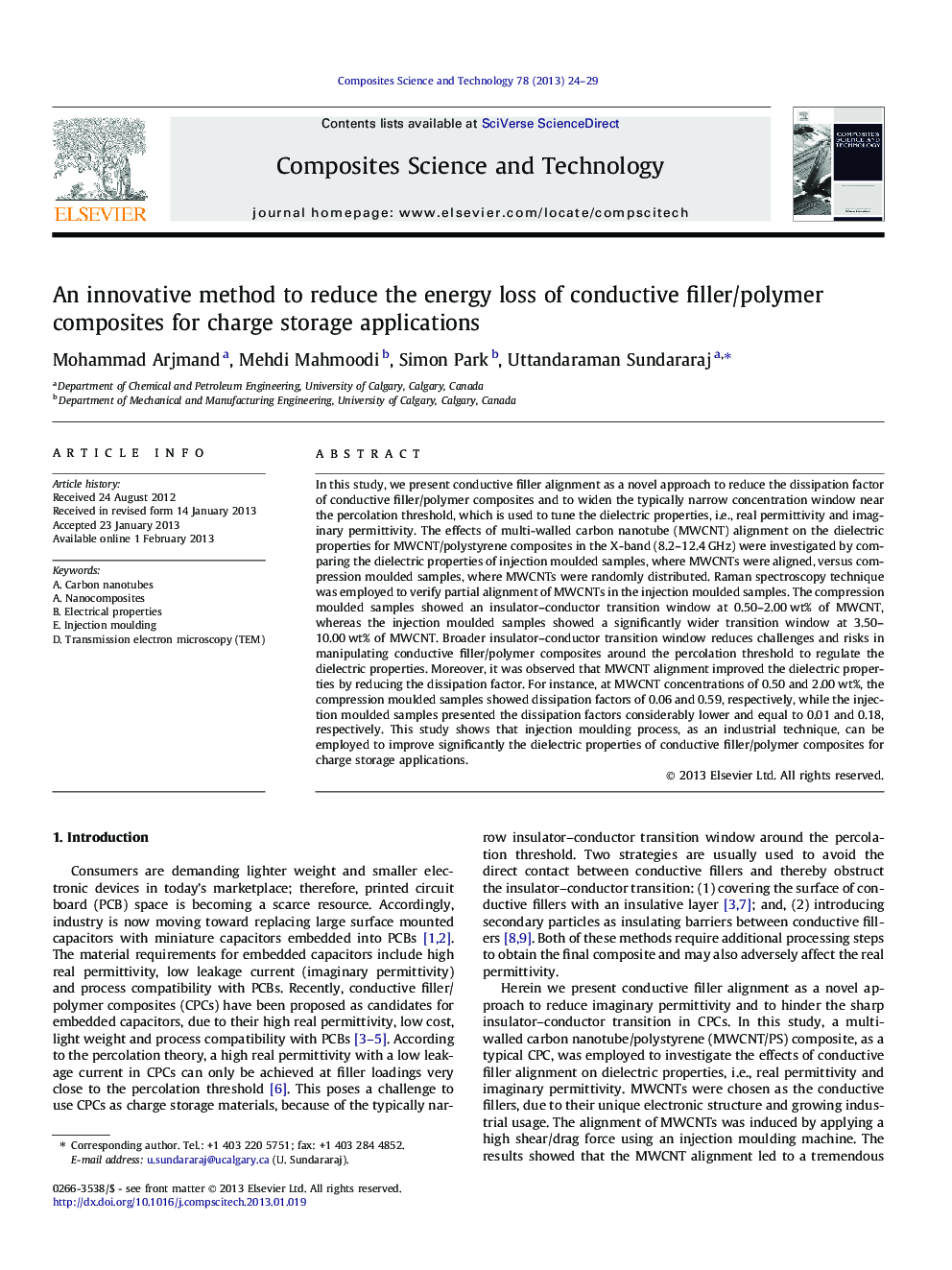| Article ID | Journal | Published Year | Pages | File Type |
|---|---|---|---|---|
| 820552 | Composites Science and Technology | 2013 | 6 Pages |
In this study, we present conductive filler alignment as a novel approach to reduce the dissipation factor of conductive filler/polymer composites and to widen the typically narrow concentration window near the percolation threshold, which is used to tune the dielectric properties, i.e., real permittivity and imaginary permittivity. The effects of multi-walled carbon nanotube (MWCNT) alignment on the dielectric properties for MWCNT/polystyrene composites in the X-band (8.2–12.4 GHz) were investigated by comparing the dielectric properties of injection moulded samples, where MWCNTs were aligned, versus compression moulded samples, where MWCNTs were randomly distributed. Raman spectroscopy technique was employed to verify partial alignment of MWCNTs in the injection moulded samples. The compression moulded samples showed an insulator–conductor transition window at 0.50–2.00 wt% of MWCNT, whereas the injection moulded samples showed a significantly wider transition window at 3.50–10.00 wt% of MWCNT. Broader insulator–conductor transition window reduces challenges and risks in manipulating conductive filler/polymer composites around the percolation threshold to regulate the dielectric properties. Moreover, it was observed that MWCNT alignment improved the dielectric properties by reducing the dissipation factor. For instance, at MWCNT concentrations of 0.50 and 2.00 wt%, the compression moulded samples showed dissipation factors of 0.06 and 0.59, respectively, while the injection moulded samples presented the dissipation factors considerably lower and equal to 0.01 and 0.18, respectively. This study shows that injection moulding process, as an industrial technique, can be employed to improve significantly the dielectric properties of conductive filler/polymer composites for charge storage applications.
